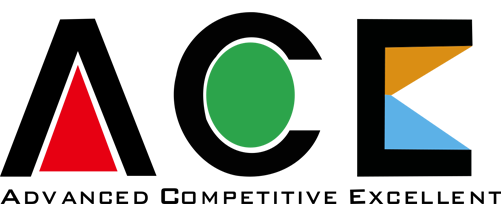The IVD industry can be divided into five sub-sections: biochemical diagnosis, immunodiagnosis, blood cell testing, molecular diagnosis, and POCT.
1. Biochemical diagnosis
1.1 Definition and classification
Biochemical products are used in a detection system composed of biochemical analyzers, biochemical reagents, and calibrators. They are generally placed in hospital laboratory and physical examination centers for routine biochemical examinations.
1.2 System classification

2. Immunodiagnosis
2.1 Definition and classification
Clinical immunodiagnosis includes chemiluminescence, enzyme-linked immunoassay, colloidal gold, immunoturbidimetric and latex items in biochemistry, special protein analyzers, etc. Narrow clinical immunity usually refers to chemiluminescence.
The chemiluminescence analyzer system is a trinity combination of reagents, instruments and analytical methods. At present, the commercialization and industrialization of chemiluminescence immunoassay analyzers on the market are classified according to the degree of automation, and can be divided into semi-automatic (plate type luminescence enzyme immunoassay) and fully automatic (tube type luminescence).
2.2 Indication function
Chemiluminescence is currently mainly used for the detection of tumors, thyroid function, hormones, and infectious diseases. These routine tests account for 60% of the total market value and 75%-80% of the test volume.
Now, these tests account for 80% of the market share. The breadth of application of certain packages is related to characteristics, such as drug abuse and drug testing, which are widely used in Europe and the United States, and relatively few.
3. Blood cell market
3.1 Definition
The blood cell counting product consists of a blood cell analyzer, reagents, calibrators and quality control products. Hematology analyzer is also called hematology analyzer, blood cell instrument, blood cell counter, etc. It is one of the most widely used instruments for clinical testing of RMB 100 million.
The blood cell analyzer classifies the white blood cells, red blood cells, and platelets in the blood by the electrical resistance method, and can obtain blood-related data such as hemoglobin concentration, hematocrit, and the ratio of each cell component.
In the 1960s, blood cell counting was achieved through manual staining and counting, which was complicated in operation, low in efficiency, poor in detection accuracy, few analysis parameters, and high requirements for practitioners. Various disadvantages restricted its application in the field of clinical testing.
In 1958, Kurt developed an easy-to-operate blood cell counter by combining resistivity and electronic technology.
3.2 Classification

3.3 Development trend
Blood cell technology is the same as the basic principle of flow cytometry, but the performance requirements of flow cytometry are more refined, and it is widely used in laboratories as scientific research instruments. There are already some large high-end hospitals that use flow cytometry in clinics to analyze the formed elements in the blood to diagnose blood diseases. The blood cell test will develop in a more automated and integrated direction.
In addition, some biochemical testing items, such as CRP, glycosylated hemoglobin and other items, have been bundled with blood cell testing in the past two years. One tube of blood can be completed. There is no need to use serum for biochemical testing. Only CRP is one item, which is expected to bring 10 billion market space.
4.1 Introduction
Molecular diagnosis has been a hot spot in recent years, but its clinical application still has limitations. Molecular diagnosis refers to the application of molecular biology techniques to the detection of disease-related structural proteins, enzymes, antigens and antibodies, and various immunologically active molecules, as well as the genes encoding these molecules. According to different detection techniques, it can be divided into accounting hybridization, PCR amplification, gene chip, gene sequencing, mass spectrometry, etc. At present, molecular diagnosis has been widely used in infectious diseases, blood screening, early diagnosis, personalized treatment, genetic diseases, prenatal diagnosis, tissue typing and other fields.
4.2 Classification


4.3 Market Application
Molecular diagnosis is widely used in infectious diseases, blood screening and other fields. With the improvement of people’s living standards, there will be more and more awareness and demand for molecular diagnosis. The development of the medical and health industry is no longer limited to diagnosis and treatment, but extends to prevention Sexual medicine. With the deciphering of the human gene map, molecular diagnosis has broad prospects in individualized treatment and even large consumption. Molecular diagnosis is full of various possibilities in the future, but we must be alert to the bubble of careful diagnosis and treatment.
As a cutting-edge technology, molecular diagnosis has made great contributions to medical diagnosis. At present, the main application of molecular diagnosis in my country is the detection of infectious diseases, such as HPV, HBV, HCV, HIV and so on. Prenatal screening applications are also relatively mature, such as BGI, Berry and Kang, etc., the detection of free DNA in fetal peripheral blood has gradually replaced the amniocentesis technique.
5.POCT
5.1 Definition and classification
POCT refers to an analysis technique where non-professionals use portable instruments to quickly analyze patient specimens and obtain better results around the patient.
Due to the large differences in testing platform methods, there are multiple methods for unified testing items, the reference range is difficult to define, the measurement result is difficult to guarantee, and the industry does not have relevant quality control standards, and it will remain chaotic and dispersed for a long time. With reference to the development history of POCT international giant Alere, M&A integration within the industry is an efficient development model.



5.2 Commonly used POCT equipment
1. Quickly test blood glucose meter
2. Fast blood gas analyzer
Post time: Jan-23-2021

